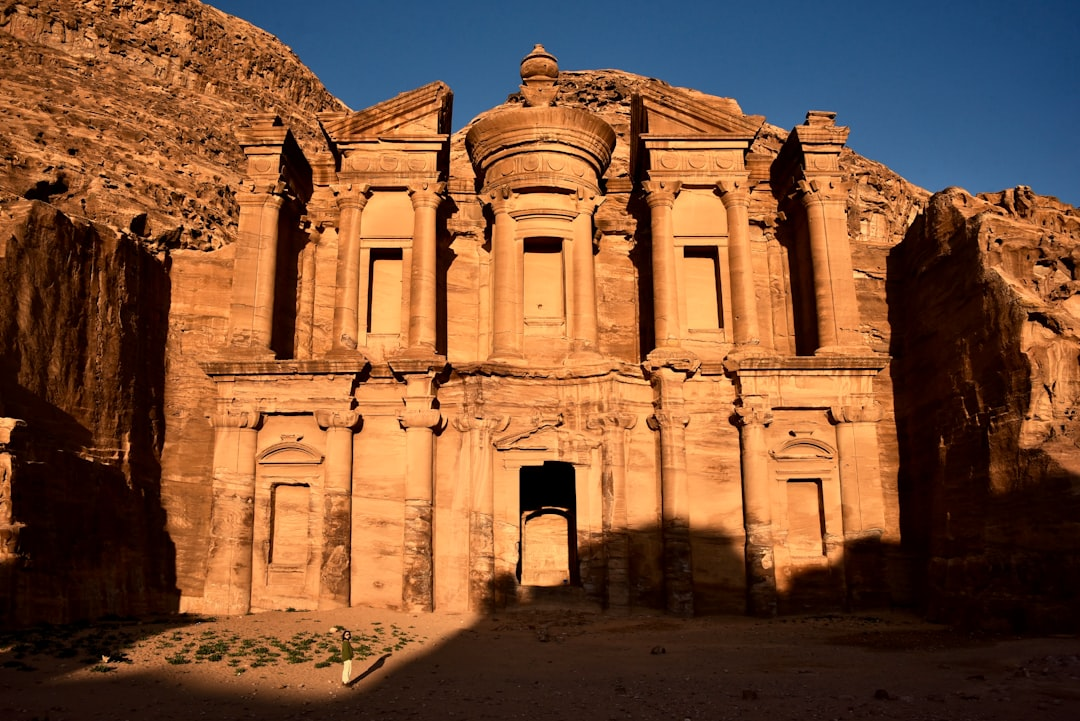
Photo by Moxin Wang on Unsplash
Jordan is a land where ancient history beautifully converges with modern marvels, creating a captivating destination for any adventurous traveller. From the vibrant streets of Amman to the awe-inspiring ruins of Petra, and from the lowest point on Earth to landscapes that feel otherworldly, this country offers an unforgettable experience. As someone who’s had the privilege to explore Jordan firsthand, I’m excited to take you on a journey through this incredible destination, sharing hidden gems, rich traditions, and local flavours that often go unnoticed by typical tourists.
Throughout this article, I’ll share insights from my travels in Jordan, highlighting must-see places, cultural experiences, and culinary delights. Whether you’re planning your own trip or simply curious about this fascinating country, you’ll find plenty of inspiration and practical tips to deepen your appreciation of Jordan.
Welcome to Amman: The Heart of Jordan
My adventure began in Amman, the bustling capital city that often gets overlooked by travellers eager to rush to Petra. But Amman is much more than a transit point; it’s a city rich with history, culture, and a vibrant local life. Staying at the luxurious Fairmont Hotel in Amman was a perfect introduction to the country’s blend of tradition and modern comfort. The Fairmont’s grand entrance and exceptional service made it clear that Jordan is ready to welcome visitors with style and warmth.

One of the highlights in Amman is the Roman Theatre, the largest Roman theatre outside of Rome. This ancient structure, built during the Roman period, could accommodate 6,000 spectators and is still used today for cultural performances like singing and dancing. Standing there, surrounded by history, I felt the energy of centuries past and even had a chance to perform on its stage!
![]()
Discovering Jordanian Cuisine: Mansaf
No visit to Jordan would be complete without tasting its most famous dish, Mansaf. Mansaf is a traditional Jordanian meal made primarily of rice, lamb cooked in a rich yoghurt sauce, and garnished with parsley. It’s a dish that embodies Jordan’s hospitality and culinary heritage.
During my trip, I was invited to feast on Mansaf in a setting that felt like a local celebration. The dish was so generous that it was a challenge to finish it all, especially with the door to the dining area locked until we did! The combination of tender lamb, aromatic rice, and creamy yoghurt was nothing short of spectacular, earning a perfect 10 out of 10 in my book.

The Jordanian Wine Experience
Many people don’t associate the Middle East with wine, but Jordan has a thriving wine culture that’s worth exploring. I had the chance to visit a local vineyard where I learned about the winemaking process and tasted some of Jordan’s finest wines. The wines, especially the reds, were robust and flavorful, surprising even the Italian members of our group who are used to some of the best wines in the world.
Sharing a glass of wine with friends while discussing everything from football to true crime podcasts made for an unforgettable evening. It was a reminder that Jordan’s culture is both ancient and contemporary, blending traditions with modern lifestyles.
Exploring the Ancient City of Jerash
On day two, we ventured to Jerash, one of the best-preserved Roman provincial towns in the world. Known as the “Pompeii of the East,” Jerash is a sprawling archaeological site that transports you back nearly 2,000 years. Walking through its ancient gates, built around 130 AD, and strolling along the colonnaded streets, you can imagine the hustle and bustle of Roman life.
It was fascinating to learn that even Alexander the Great had been here, and to joke about my own royal status as “Alesia the Princess” added a lighthearted touch to the historic atmosphere. The intense heat of the day, soaring over 100°F, made exploring the site a challenge, but the experience was worth every drop of sweat.
A Fun Challenge on the Hot Pavement
One memorable moment was our impromptu competition to see who could stand the longest on the scorching pavement without shoes. The pavement literally burned our feet, but it was all in good fun and added a unique story to our journey. The heat was intense, but the laughter and camaraderie made it a highlight of the day.
Authentic Flavours at a Local Restaurant
After exploring Jerash, we stopped at a local restaurant called Batu Beu Bear, located about an hour and a half outside Amman. What made this meal special was the emphasis on fresh, organic ingredients and traditional cooking methods, especially the generous use of olive oil, which is often called the “secret sauce” of Jordanian cuisine.
The freshness and quality of the food were evident in every bite, making it a perfect way to recharge after a day of sightseeing. This meal was a reminder that Jordanian food is a culinary treasure worth experiencing, with flavours that reflect the land and its people.
Sunset and the Rainbow Road in Amman
Returning to Amman, we caught a breathtaking sunset overlooking the old town before heading to explore the Rainbow Road. Not to be confused with the famous Mario Kart track, the Rainbow Road in Amman is a vibrant, colourful street that offers a fantastic view of the city. It’s a perfect spot for photography enthusiasts, with every corner offering something photogenic—from blooming trees to colourful markets and even friendly street cats.
Rating Amman’s photogenic appeal, everyone agreed it’s a solid 10 out of 10. The city’s charm lies in its authentic, lived-in atmosphere that invites exploration and discovery at every turn.

A Culinary Highlight: Supra Restaurant in Amman
For food lovers, Supra Restaurant in the heart of Amman is a must-visit. Known for its incredible bread and authentic Jordanian dishes, Supra offers an unforgettable dining experience. I was amazed at the quality and flavour of the food, especially the falafel and the tomato sauce, which even impressed our Italian friend Jeppe, who declared it as good as anything he’s had in Italy.
This restaurant is a testament to Jordan’s rich culinary heritage and its ability to delight even the most discerning palates. It’s a food lover’s paradise, and the portions are generous enough to keep you coming back for more.

Jordanian Ice Cream: A Sweet Surprise
To round off our meal, we indulged in Jordanian pistachio ice cream, served with a unique cotton candy treat that locals sometimes jokingly call “camel hair.” The ice cream was creamy and delicious, providing the perfect cool-down after a long day of exploring and feasting.
This sweet treat was a delightful end to an already incredible culinary journey through Jordan.

The Majestic Ruins of Petra
The highlight of the trip was our visit to Petra, the ancient Nabatean city carved into rose-red rock. After a three-hour road trip, we arrived at the entrance and chartered a golf cart to help us navigate the vast site under the intense heat.
Walking through Petra felt like stepping back in time. This UNESCO World Heritage Site spans approximately 100 square kilometres and was a thriving city about 2,000 years ago. The engineering prowess of the Nabateans is evident in their sophisticated water channel systems and rock-cut architecture.
The iconic Treasury building is the most famous landmark of Petra. Local Bedouins believe that it contains hidden gold, which adds to its mystique. Exploring the Treasury and the surrounding caves on camelback was an unforgettable experience, offering a unique perspective on this ancient wonder.

The Nabateans: Masters of Engineering
The Nabateans were incredible engineers who created an advanced aqueduct system to channel water throughout Petra. This allowed them to sustain a thriving city in a desert environment. Learning about their ingenuity deepened my appreciation for the site beyond its stunning visuals.
While the Bedouins once lived in Petra, they have since moved to nearby villages beyond the mountains, but their cultural legacy remains an integral part of the region’s identity.
Why Jordan Should Be Your Next Adventure
Jordan offers a unique blend of history, culture, natural beauty, and hospitality that makes it a top-rated destination for travellers seeking adventure and authenticity. From the ancient ruins of Jerash and Petra to the vibrant streets of Amman and the delicious local cuisine, Jordan invites you to explore its many layers and stories.
Whether you’re an archaeology enthusiast, a foodie, or a nature lover, Jordan has something special to offer. Its welcoming people, rich traditions, and breathtaking landscapes ensure that every visit is memorable.
Frequently Asked Questions about Jordan Travel
What is the best time to visit Jordan?
The best time to visit Jordan is during the spring (March to May) and autumn (September to November) when the weather is mild and pleasant for exploring outdoor sites like Petra and Jerash.
Is it safe to travel to Jordan?
Yes, Jordan is considered one of the safest countries in the Middle East for tourists. The locals are known for their hospitality and welcoming nature.
What is the currency used in Jordan?
The Jordanian Dinar (JOD) is the official currency. Credit cards are widely accepted in major cities, but carrying some cash is advisable for smaller purchases.
Do I need a visa to visit Jordan?
Visa requirements vary by nationality. Many travellers can obtain a visa on arrival, but it’s best to check the specific requirements based on your country before travelling.
What are some must-try foods in Jordan?
- Mansaf: The national dish made of lamb cooked in yoghurt sauce with rice.
- Falafel: Deep-fried chickpea balls, often served with tahini sauce.
- Hummus and Baba Ganoush: Classic Middle Eastern dips.
- Jordanian Wine: Locally produced wines that are surprisingly good.
- Jordanian Ice Cream: Often served with unique toppings like cotton candy.
How should I get around Jordan?
Renting a car is a popular option for flexibility, but guided tours and taxis are also widely available. In Petra, golf carts and camels can help you explore the vast site comfortably.
Is it necessary to hire a tour guide?
While not mandatory, hiring a knowledgeable tour guide can greatly enrich your experience by providing historical context and helping navigate the sites efficiently.
Final Thoughts
Jordan is a destination that surprises and delights at every turn. Its incredible history, welcoming people, and stunning landscapes make it a place that stays with you long after you leave. From the bustling streets of Amman to the ancient wonders of Petra, every moment in Jordan is an invitation to explore, learn, and connect with a culture that has thrived for millennia.
If you’re looking for a travel experience that combines adventure, history, and authentic local flavour, Jordan should be at the top of your list. Pack your bags, bring your sense of wonder, and prepare to be amazed by this extraordinary country.


